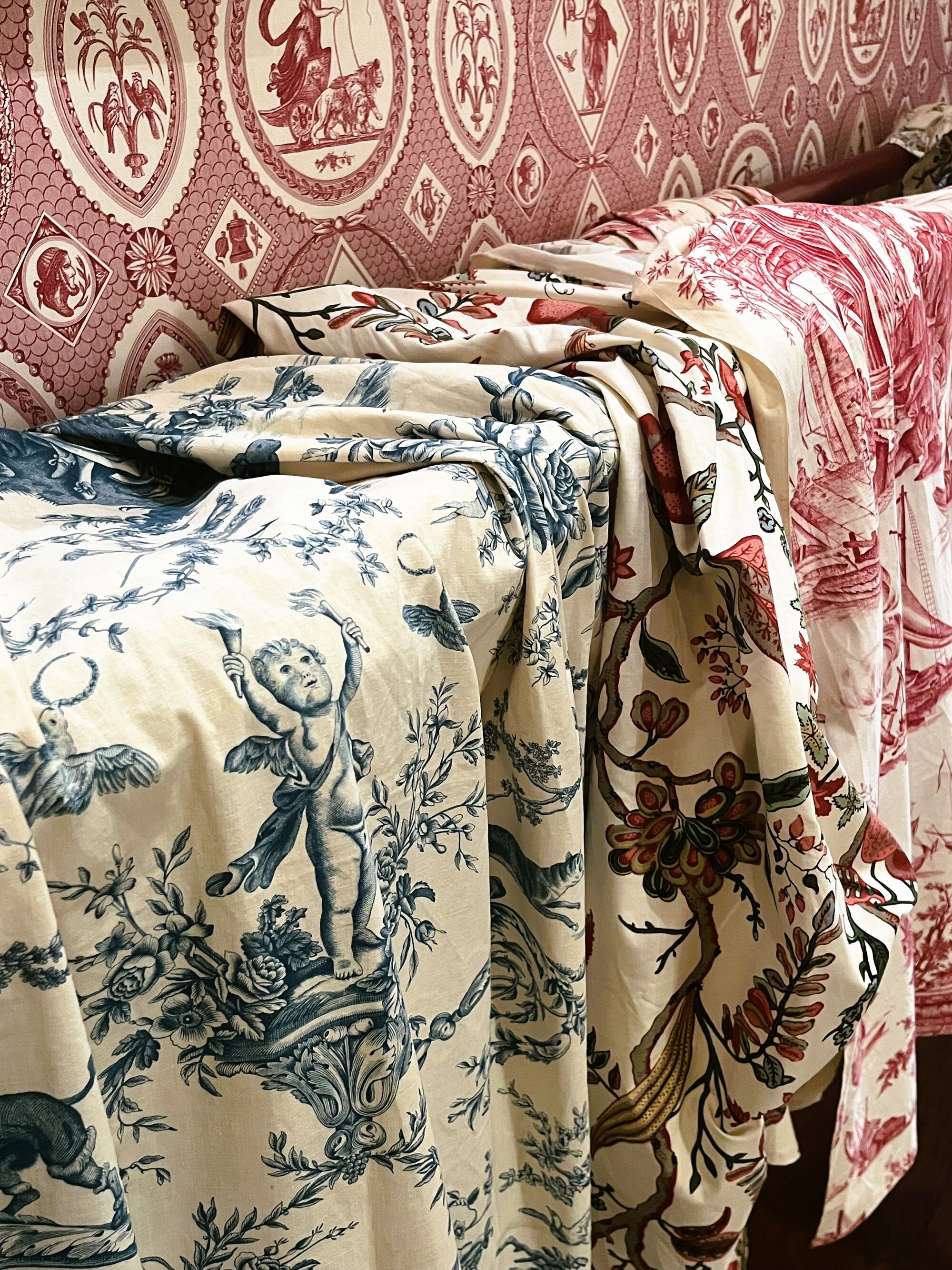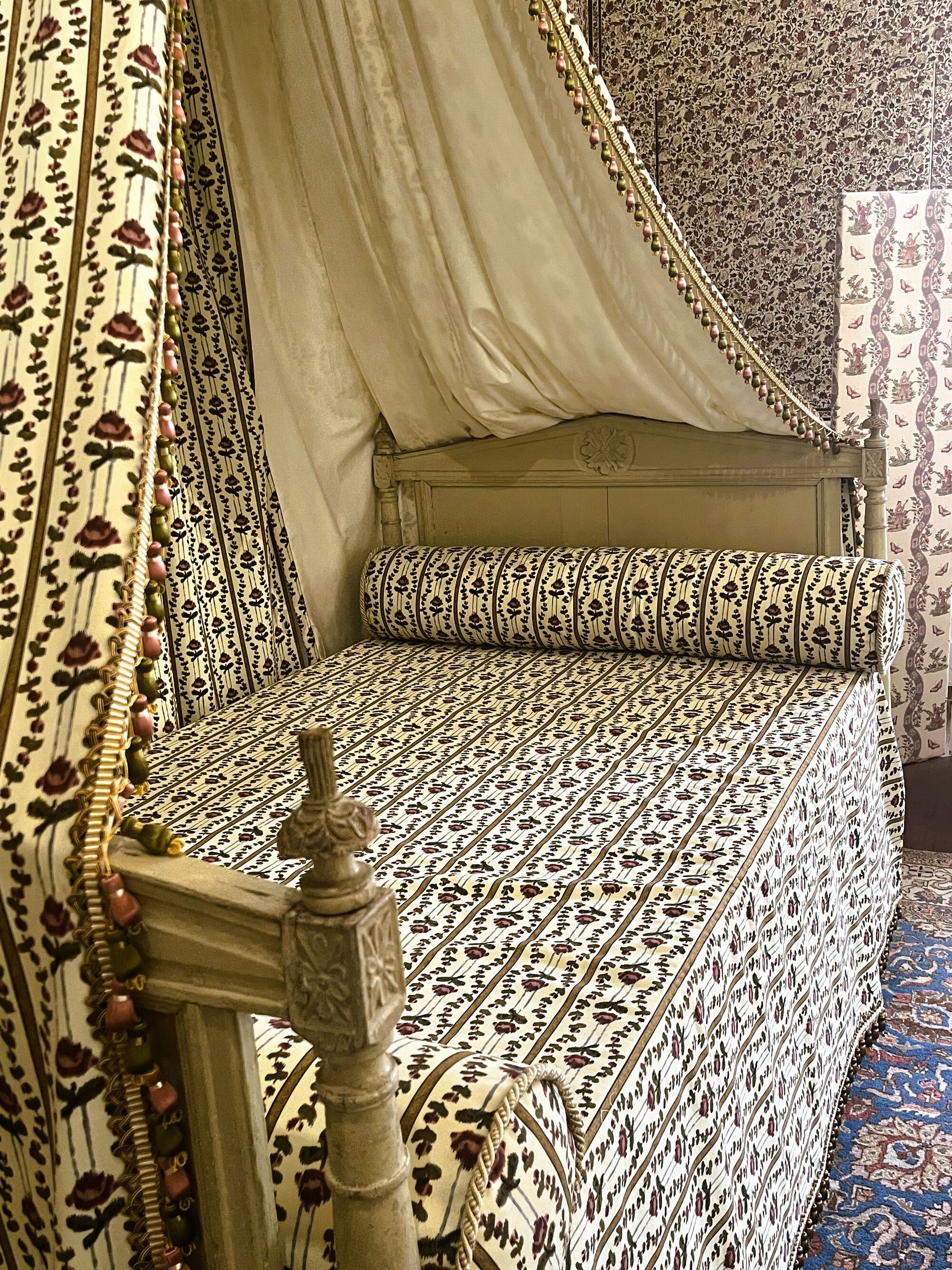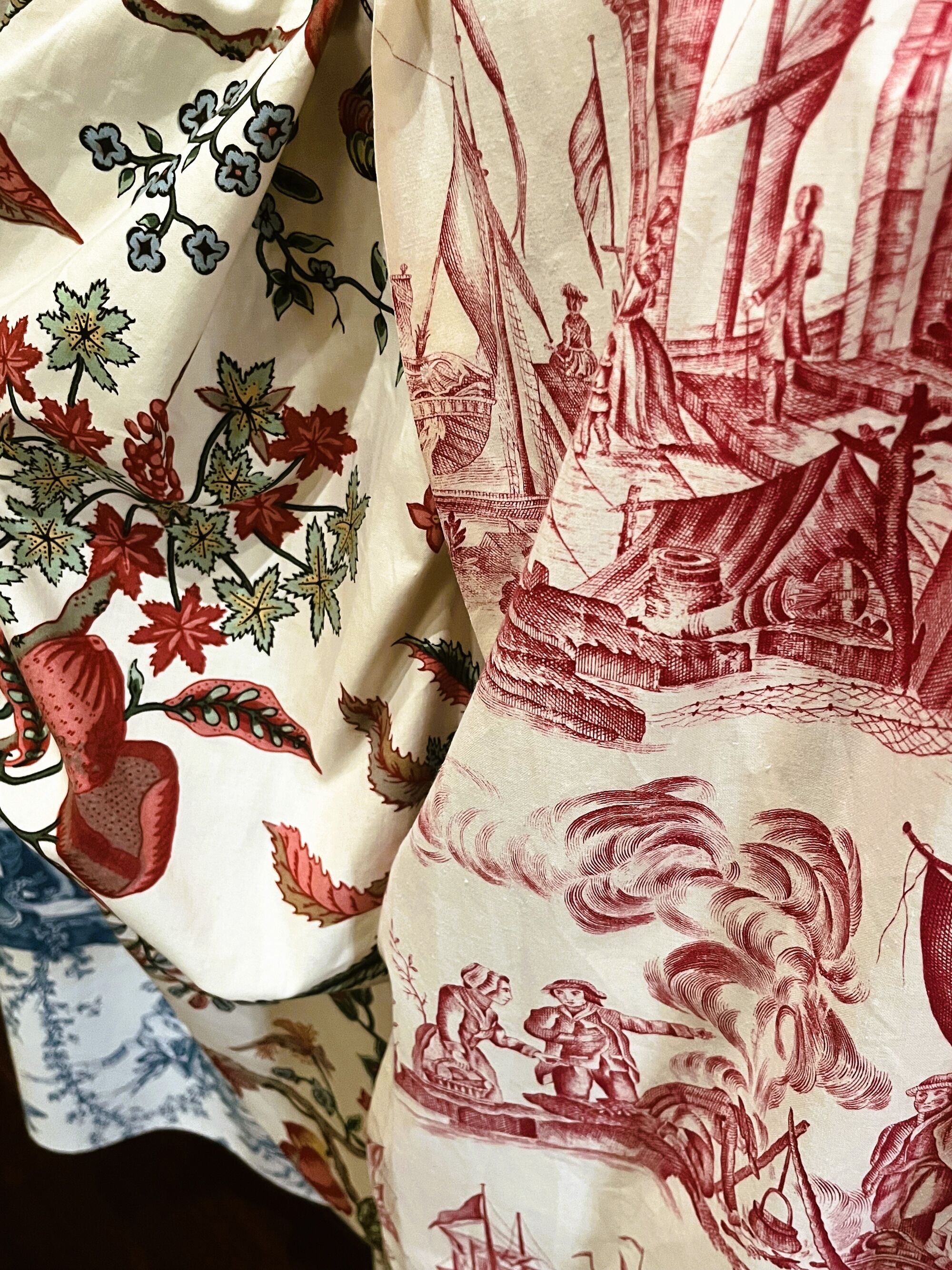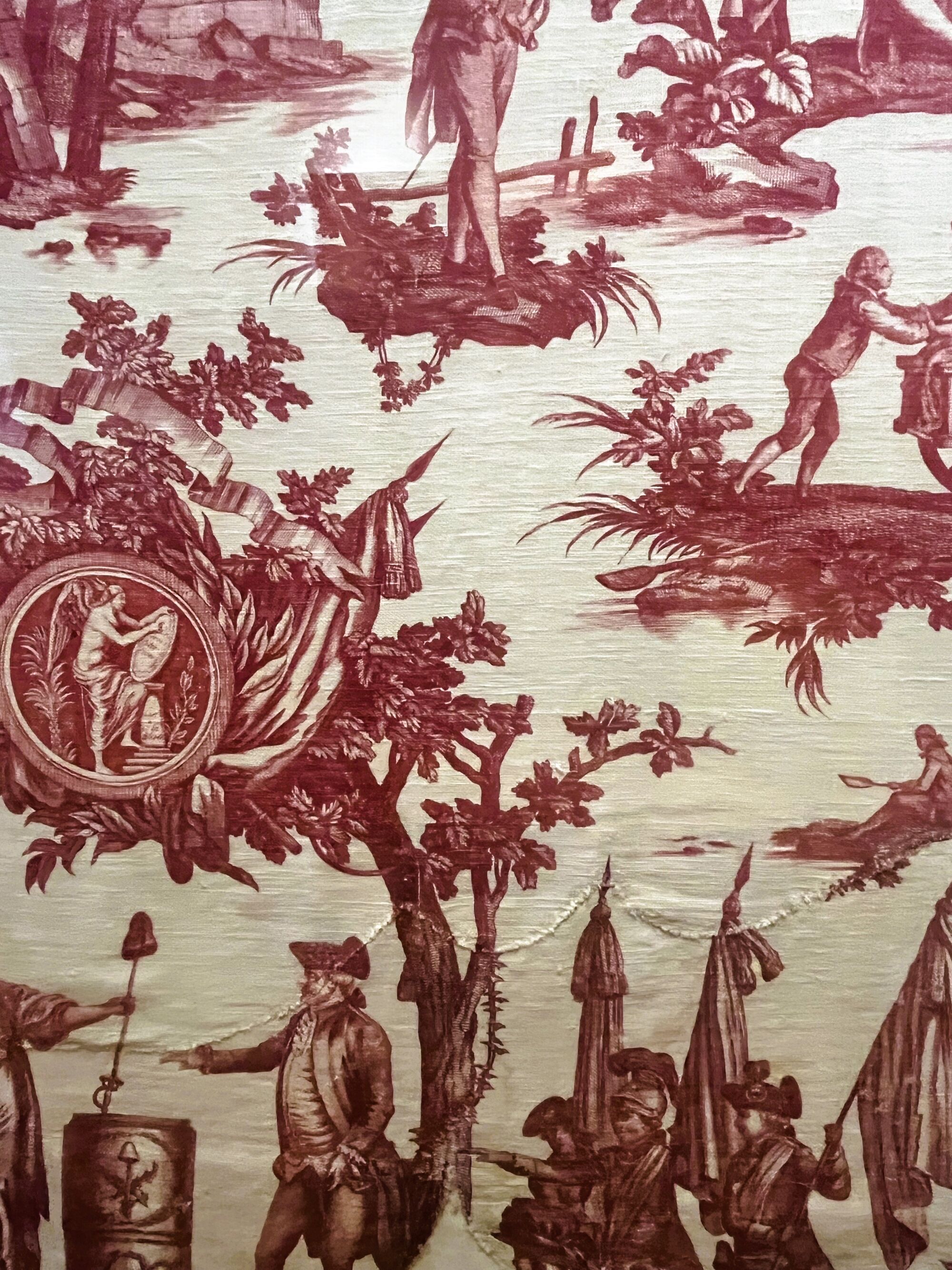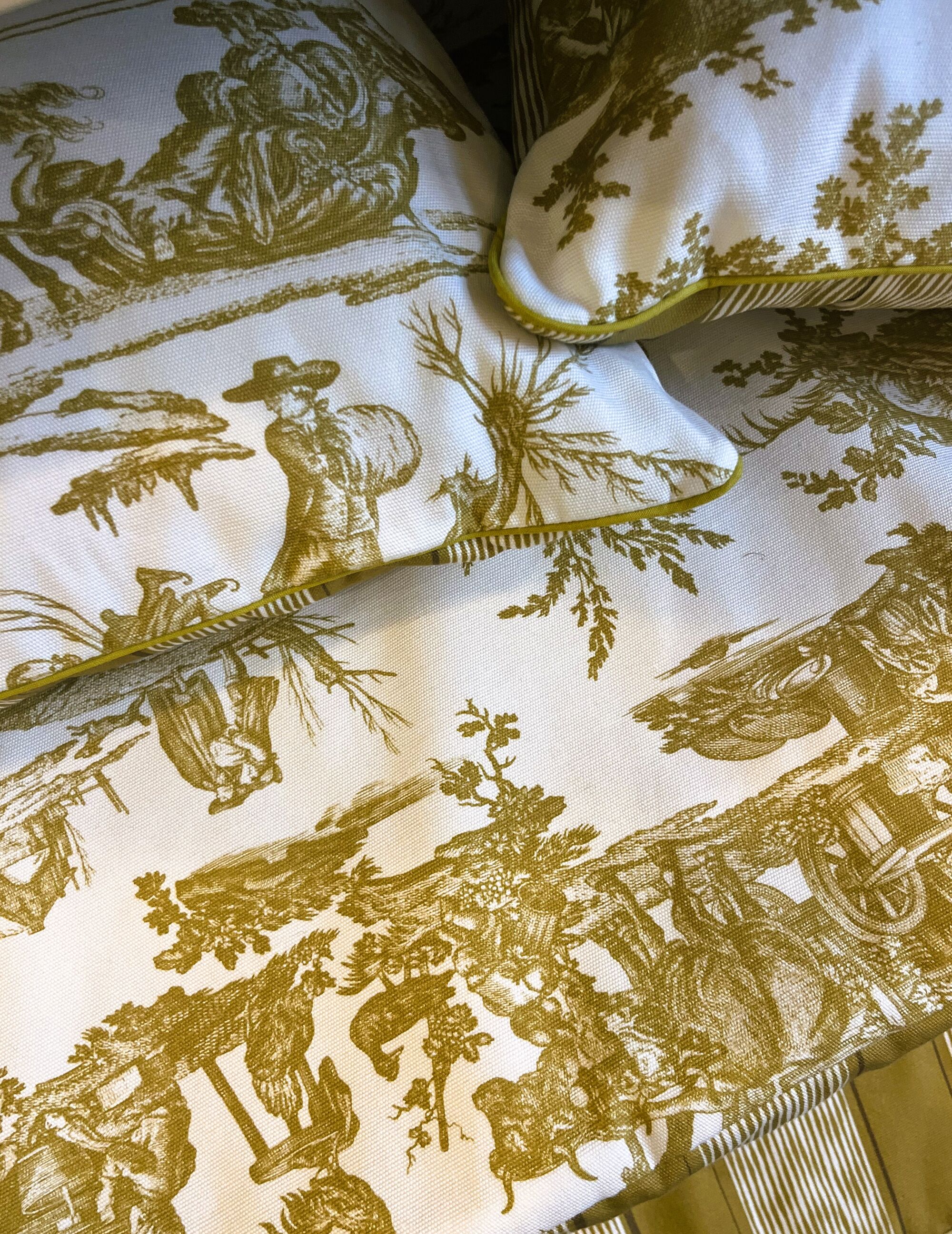|
For over 200 years, the toile de Jouy travels through the centuries and decorates our wallpapers, our tablecloths, our napkins, our cushions... without ever going out of fashion. Focus on this fabric like no other which reflects good taste and traditional French know-how throughout the world. |
|
|
What is toile de Jouy? Very fashionable among the French nobility and upper middle class at the beginning of the 18th century, the toile de Jouy is inspired by "indiennes", these traditional oriental cotton fabrics with very bright colors and floral patterns printed by hand or with an engraved wooden stamp, brought to Europe two centuries earlier. Made for the first time in the factory created by Christophe Philipe Oberkampf in 1760 in Jouy-en-Josas (hence its name) in Yvelines (France), the toile de Jouy is a 100% cotton fabric whose prints come from authentic engravings created at that time. |
|
|
Famous throughout the world, toile de Jouy almost never existed... In fact, the success of these "indian fabrics" was such at the time that Louis XIV, who feared their competition with French clothiers, decided to ban their importation and the manufacture of these fabrics in the kingdom. It was not until 1760 that this ban was lifted, marking the beginning of the rise of the "French" version of toile de Jouy. In 1760, Oberkampf founded his own printed canvas factory in Jouy-en-Josas. The location was not chosen at random, as it was close to Versailles, where the King's court was located. A genius entrepreneur, Oberkampf sought out cotton fabrics from all over Europe. Tapestries, furnishing fabrics, toiletry goods, the nobles were infatuated with this refined fabric. Including Louis XIV, then Marie-Antoinette, who made it a symbol of French elegance and refinement. |
|
|
|
Manufacturing method Toile de Jouy is made using a fabric printing process. Originally, engraved wooden plates were used to print the designs. Later, the technique evolved to the use of copper plates, allowing for unparalleled precision and finesse. The fabric is laid out on a printing table and the patterns are applied layer by layer, creating detailed designs. True works of art, these drawings are then taken up and engraved on the various printing media. They depict genre scenes, of mythological or pastoral inspiration, marked by lightness and freshness which depict flowers, animals or characters who hunt, who eat lunch or who get naughty in picturesque settings. Toile de Jouy prints are generally monochrome patterns that use the colors of bistre (brown, gray, etc.) or madder (red, pink, purple) printed on an ecru or white background. Contemporary revival Even today, toile de Jouy continues to inspire the world of fashion and decoration and is once again riding the wave of printed fabrics. Many contemporary prints are published and take up "in the style of" toile de Jouy, the main characteristics of the famous engravings of yesteryear which will have played a determining role in the history of decorative arts! |
|
|
A beautiful museum (Musée de la Toile de Jouy, Jouy-en-Josas, 78, France), traces the history of the famous fabric. Beautiful and educational. #toiledejouy #fabrics #decoration #toiledejouymuseum #cushions #decorativearts |

